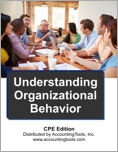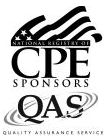Understanding Organizational Behavior (CPE Course)
CPE Credit: 13 hours
Course Type: Downloaded PDF materials with online test
Price (with PDF Textbook): $90
Course Description
A good way to improve the performance of a business is to learn more about how people interact within it – which is organizational behavior. In the Understanding Organizational Behavior course, we cover employee emotions, perceptions, personalities, and motivations, and how these factors impact how people behave within a business. These underlying issues drive how people make decisions, behave within groups, communicate, and lead. We also tie these concepts into the best ways to navigate through conflict management and change management. In short, this course is essential reading for those who want to learn more about why employees behave and how they interact with each other.
Author: Steven Bragg
Course Number: BM1012
Table of Contents
Chapter 1. Organizational Behavior Overview
Chapter 2. Employee Diversity
Chapter 3. Job Satisfaction
Chapter 4. Employee Emotions
Chapter 5. Employee Personalities
Chapter 6. Employee Perceptions and Related Decision Effects
Chapter 7. Employee Motivation
Chapter 8. Group Behavior
Chapter 9. Work Teams
Chapter 10. Communications
Chapter 11. Leadership
Chapter 12. Conflict Management
Chapter 13. Change Management
Chapter 14. Organizational Politics
Chapter 15. Organizational Structure
Chapter 16. Organizational Culture
Learning Objectives
Identify the issues impacting proper ethical behavior.
Specify the inputs to the organizational behavior model.
Describe the effects of discrimination in the workplace.
Identify the classifications used for rating the abilities of employees.
Specify the drivers of a person’s attitude.
Identify the triggers for cognitive dissonance.
Recall which actions can improve job satisfaction.
Specify what can trigger positive emotions.
Describe the behavior of a narcissist.
Specify how people can adjust their behavior to a situation.
Specify the outcomes associated with the situation strength theory.
Recall the underpinnings of attribution theory.
Recall the different types of biases, and how they can impact goal achievement.
Specify which cultural characteristics can be used to enhance a business.
Identify intrinsic and extrinsic rewards, and state how they differ from each other.
Recall the various techniques used to make jobs more interesting.
Recall the requirements for empowerment to work.
Specify the stages that a group goes through during its development.
Identify the characteristics of a project using the punctuated-equilibrium model.
Recall what norms are, and specify examples of them.
Specify the factors that can alter the size of a group or its cohesiveness.
Identify the essential components of a team.
Recall the different types of teams and what they do.
Specify the different types of positions on a team, and what each one is supposed to do.
Identify the issues that can cause a team to be ineffective.
Recall the characteristics of an ideal team member.
Specify the characteristics of an effective team.
Identify the different types of communication and when they are used.
Recall the barriers to communication within a business.
Specify the actions that can be taken to enhance the credibility of a leader.
Identify the skills that a leader should have.
Recall the specifics of the leader-member exchange theory.
Specify the factors that support transformational leadership.
Identify the characteristics of servant leadership.
State the outcomes of a conflict spiral.
Recall the options for dealing with conflicts, and the outcomes of each one.
Specify the situations in which change initiatives are more likely or less likely.
Identify the process for identifying change initiatives to enact.
Recall how a vision statement should be tested to improve its odds of success.
Specify how to lock in a change initiative for the long term.
Identify the factors by which dependency can be used to gain power over others.
Recall the actions associated with political behavior.
Specify the actions that may be taken as part of impression management.
Identify the indicators of the silo mentality.
Recall where line and staff personnel are more likely to be located in a business.
Specify the factors that influence a firm’s span of control.
Identify the actions that may be taken to perpetuate a firm’s culture.
Recall the actions that can be taken to enhance a company’s organizational climate.
Level: Overview
Instructional Method: QAS Self-Study
NASBA Category: Business Management & Organization
Prerequisites: None
Advance Preparation: None
Latest Review Date: March 2025
Program Registration Requirements: Click on "Purchase Course" near the top of this page to pay for and access the course. You will then be able to download the course as a PDF file, then take an on-line examination, and then download a certificate of completion if you pass the examination.
Program Refund Policy: For more information regarding administrative policies concerning complaints, refunds, and other matters, see our policies page.
AccountingTools, Inc. is registered with the National Association of State Boards of Accountancy (NASBA) as a sponsor of continuing professional education on the National Registry of CPE Sponsors. State boards of accountancy have the final authority on the acceptance of individual courses for CPE credit. Complaints regarding registered sponsors may be submitted to the National Registry of CPE Sponsors through its website: www.nasbaregistry.org.
The NASBA sponsor identification number for Accountingtools, Inc. is 115881.
AccountingTools is an IRS Approved Continuing Education Provider. We are compliant with the requirements for continuing education providers (as described in sections 10.6 and 10.9 of the Department of Treasury’s Circular No. 230 and in other IRS guidance, forms, and instructions). Our IRS Approved Continuing Education Provider number is 72821.


